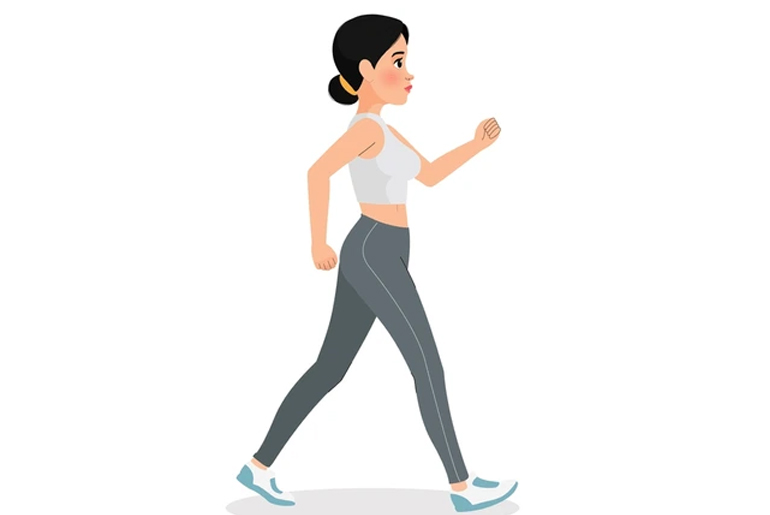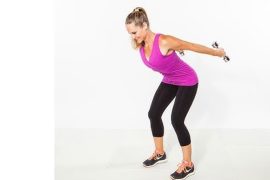Brisk walking is a simple yet effective form of cardiovascular exercise that involves walking at a faster pace than usual, typically around 3 to 4 miles per hour. This activity boosts heart health, improves blood circulation, and helps in weight management by burning calories. Regular brisk walking strengthens muscles, enhances endurance, and supports joint flexibility without the impact on the body that running or jogging might have. It also helps reduce stress, improve mood, and may lower the risk of chronic conditions like diabetes, hypertension, and certain cancers. Suitable for most fitness levels, it requires no special equipment and can easily be incorporated into daily routines.
Impact of brisk walking on knee joints:
Brisk walking is a low-impact exercise that can have several positive effects on knee joints, especially when done correctly. Here are some key points regarding the impact of brisk walking on knee joints:
Benefits:
- Joint Lubrication: Walking promotes the production of synovial fluid, which lubricates the joints, reducing friction and helping to prevent stiffness.
- Strengthening Muscles: Regular brisk walking strengthens the muscles around the knees, including the quadriceps, hamstrings, and calves. Stronger muscles can provide better support and stability to the knee joint.
- Weight Management: Maintaining a healthy weight through brisk walking reduces the load on the knees, decreasing the risk of osteoarthritis and other joint issues.
- Increased Range of Motion: Consistent walking can help maintain or improve the range of motion in the knee joint, reducing the likelihood of stiffness.
- Improved Bone Health: Weight-bearing activities like brisk walking can strengthen bones and reduce the risk of osteoporosis, which can indirectly benefit joint health.
- Enhanced Circulation: Walking increases blood flow to the knee area, delivering essential nutrients and promoting healing in the joint tissues.
Considerations:
Proper Footwear: Wearing supportive shoes can help absorb impact and reduce stress on the knees.
- Surface Matters: Walking on softer surfaces (like grass or dirt trails) can reduce joint impact compared to harder surfaces (like concrete).
- Listen to Your Body: If you experience knee pain while walking, it’s important to pay attention and consult a healthcare professional. Modifications, such as adjusting walking pace or duration, may be necessary.
- Warm-Up and Cool Down: Incorporating stretching and warm-up exercises before and after walking can help prevent injuries and improve flexibility.
- Alternating Activities: Mixing brisk walking with other low-impact exercises (like swimming or cycling) can provide variety and prevent overuse injuries.
Brisk walking lead to knee injurie:
Brisk walking is typically considered a safe and beneficial form of exercise that promotes cardiovascular health and overall fitness; however, it can potentially lead to knee injuries under certain circumstances. Factors contributing to this risk include inadequate footwear, which may lack proper support and cushioning, leading to misalignment and strain on the knees. Additionally, poor walking technique, such as overstriding or improper posture, can place excessive stress on the knee joints, resulting in discomfort or injury. The walking surface also plays a crucial role; uneven, hard, or slippery terrains can increase the likelihood of slips and falls, putting additional strain on the knees.
Individuals with pre-existing knee issues, such as arthritis or previous injuries, may find brisk walking exacerbates their conditions, leading to pain or further injury. Furthermore, overtraining—where individuals increase their walking intensity or duration too rapidly—can result in overuse injuries, particularly in the knee area. To mitigate the risk of knee injuries while engaging in brisk walking, it is vital to wear supportive shoes, maintain proper walking form, choose safe and even surfaces, and gradually ramp up exercise intensity. If knee pain occurs, it is essential to rest, ice the affected area, and seek medical advice if necessary.
Warning signs of knee injuries
- Pain: Persistent or sharp pain in or around the knee joint, especially during movement or weight-bearing activities.
- Swelling: Noticeable swelling or puffiness around the knee, which may indicate inflammation or injury to the ligaments or cartilage.
- Stiffness: Difficulty bending or straightening the knee, often accompanied by a feeling of tightness or reduced range of motion.
- Instability: A sensation of the knee “giving way” or feeling unstable when walking or standing, which may indicate ligament damage.
- Popping or Clicking Sounds: Audible noises during movement, particularly if accompanied by pain, may suggest issues with the cartilage or ligaments.
- Warmth and Redness: The affected area may feel warm to the touch and appear red, indicating inflammation or infection.
- Deformity: Any visible deformity or abnormal alignment of the knee joint can be a sign of a serious injury.
- Difficulty Bearing Weight: Inability to put weight on the affected knee or limping while walking may indicate a significant injury.
If you experience any of these symptoms, it’s important to seek medical advice for a proper diagnosis and treatment plan. Early intervention can help prevent further injury and facilitate a quicker recovery.
Proper Walking Technique:
Posture:
- Stand tall with your head up, shoulders relaxed, and back straight.
- Engage your core for stability.
Foot Placement:
- Use a heel-to-toe motion when walking.
- Take shorter strides and land your foot directly beneath your body.
Knee Alignment:
- Keep your knees slightly bent; avoid locking them.
- Ensure your knees track in line with your toes.
Arm Movement:
- Bend your elbows at about 90 degrees.
- Swing your arms naturally in coordination with your legs.
Footwear:
- Wear supportive shoes with good cushioning.
- Replace worn shoes regularly.
Surface Choice:
- Prefer softer surfaces like grass or dirt to reduce impact.
Warm-Up and Stretch:
- Warm up for 5-10 minutes before walking.
- Stretch after your walk to maintain flexibility.
Pacing:
- Start slow and gradually increase intensity.
- Listen to your body and take breaks if needed.
To protect your knees while walking, it’s essential to use proper technique. Start by wearing supportive shoes that fit well and provide adequate cushioning to absorb impact. Maintain good posture with your head up, shoulders relaxed, and back straight to ensure even weight distribution. Additionally, listen to your body and pay attention to any discomfort, adjusting your routine as needed. Warming up with gentle movements and cooling down with stretches can further enhance joint health and flexibility. By following these guidelines, you can enjoy the benefits of walking while minimizing the risk of knee injuries.
By following these expert tips, you can enjoy the benefits of brisk walking while minimizing the risk of knee issues. Regular walking can strengthen the muscles around the knees, improve overall joint function, and enhance your fitness level.
Disclaimer:
The information contained in this article is for educational and informational purposes only and is not intended as a health advice. We would ask you to consult a qualified professional or medical expert to gain additional knowledge before you choose to consume any product or perform any exercise.








